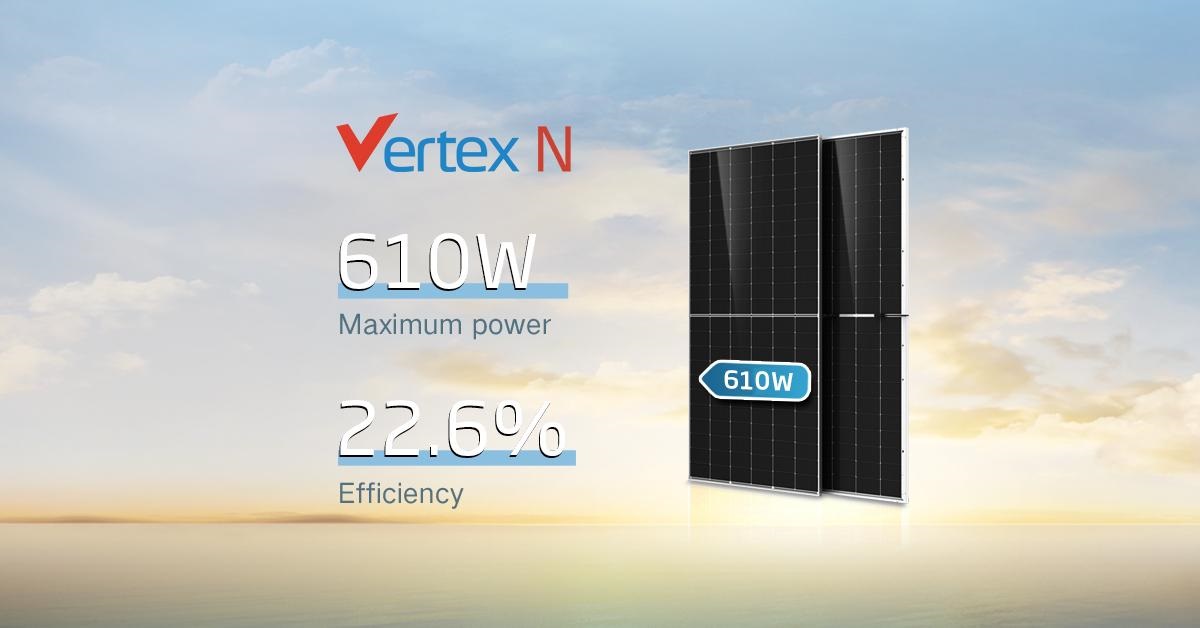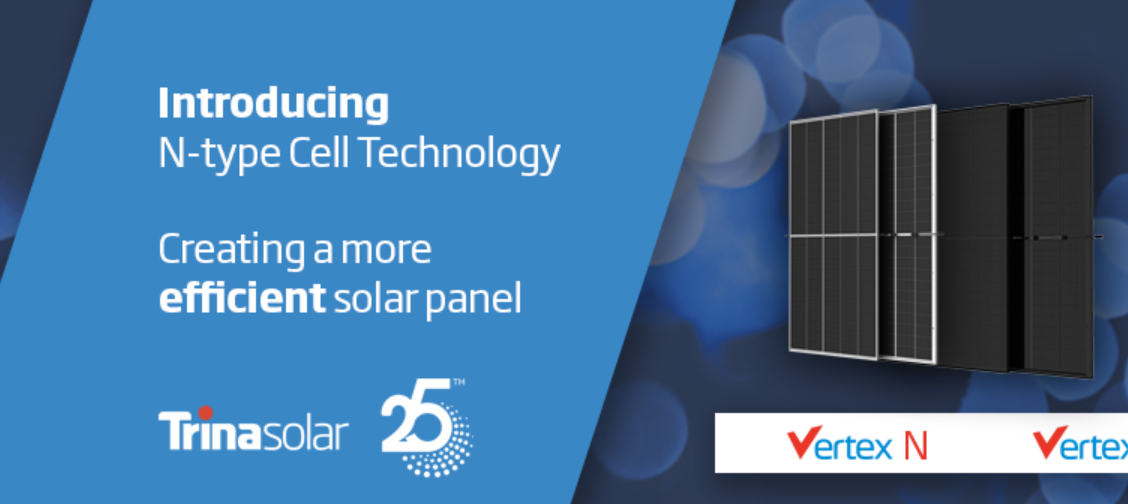Trina Solar, the global PV and smart energy total solutions provider, has unveiled its latest head-turner, the Vertex N 610W for C&I and utility-scale projects. Together with the Vertex N 700W for utility scenarios and Vertex S+ 450W for rooftop PV systems, Trina Solar’s n-type module portfolio is based on the leading 210 product technology platform and n-type i-TOPCon cell technology. The release of Vertex N will hit and reshape the PV market again.
Power Range:
585W~610WMax. Efficiency:
22.6%Dimensions of Module L*W*H:
2382×1134×30 mmWeight:
33.7kgNumber of Cells:
132
ELECTRICAL DATA(STC*)
| Peak Power Watts (Wp) | 585 | 590 | 595 | 600 | 605 | 610 |
| Power Tolerance (W) | 0~+5 | |||||
| Maximum Power Voltage (V) | 39.5 | 39.7 | 40.0 | 40.3 | 40.5 | 40.8 |
| Maximum Power Current (A) | 14.82 | 14.86 | 14.89 | 14.91 | 14.94 | 14.96 |
| Open Circuit Voltage (V) | 47.5 | 47.8 | 48.1 | 48.4 | 48.7 | 49.0 |
| Short Circuit Current (A) | 15.68 | 15.72 | 15.76 | 15.80 | 15.83 | 15.86 |
| Module Efficiency (%) | 21.7 | 21.8 | 22.0 | 22.2 | 22.4 | 22.6 |

What’s N-Type Technology and What Does it Mean for Solar?
N-type technology in the context of solar panels refers to the use of N-type (n-doped) crystalline silicon solar cells. This is a type of semiconductor material that is doped with impurities to create a surplus of electrons (negative charge carriers). Here's what N-type technology means for solar:
1. Efficiency: N-Type solar cells generally offer higher efficiency compared to traditional P-Type (p-doped) cells. This increased efficiency is due to the lower sensitivity of N-Type cells to oxygen and light-induced degradation, leading to better long-term performance.
2. Lower Degradation Rates: N-Type solar cells often exhibit lower degradation rates over time. This means that they can maintain their efficiency at a higher level for an extended period, providing more stable and predictable energy output over the life of the solar panel.
3. Passivated Emitter Rear Contact (PERC) Technology: Many N-Type solar panels incorporate PERC technology. PERC enhances light absorption and electron capture by passivating the rear surface of the solar cell, improving overall efficiency.
4. Temperature Performance: N-Type solar cells tend to perform better at high temperatures compared to P-Type cells. This can be advantageous in regions with hot climates, as the panels maintain higher efficiency under such conditions.
5. Lower Light-Induced Degradation: N-Type cells are less susceptible to light-induced degradation, ensuring that the solar panels maintain their performance levels even after prolonged exposure to sunlight.
6. Durability: The use of N-Type technology, especially in conjunction with dual-glass construction, can enhance the durability and resistance of solar panels to environmental factors, contributing to a longer lifespan.
7. Bifacial Capability: N-Type solar panels are often designed to be bifacial, meaning they can capture sunlight from both the front and rear sides. This feature can increase overall energy production by utilizing reflected sunlight from surrounding surfaces.
In summary, N-Type technology in solar panels represents an advancement in material and design, leading to improved efficiency, lower degradation rates, and enhanced performance in various environmental conditions. These characteristics contribute to the long-term reliability and effectiveness of solar energy systems.